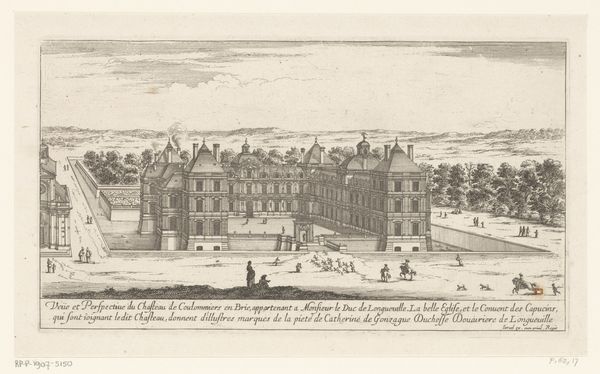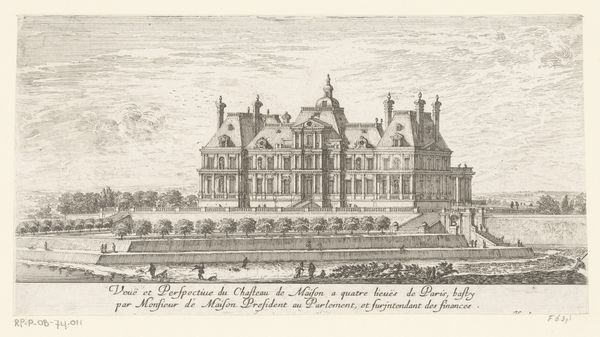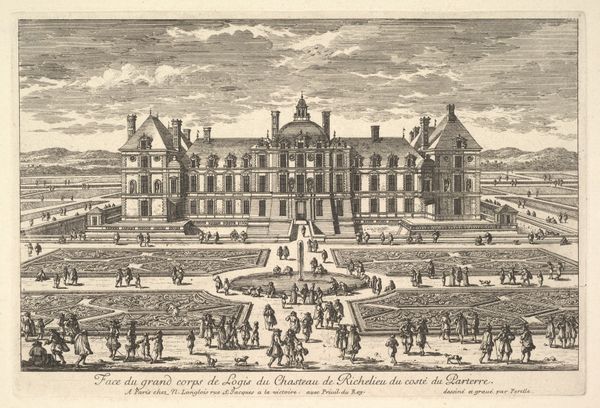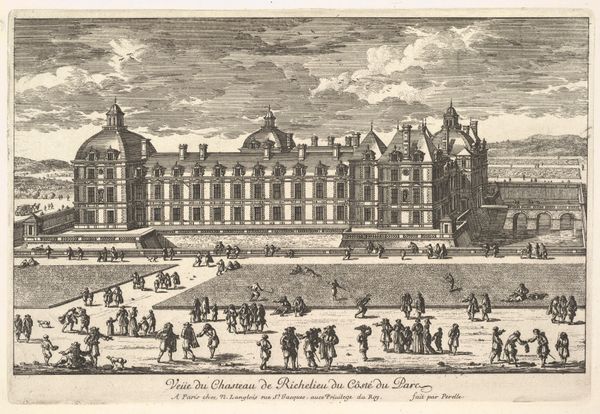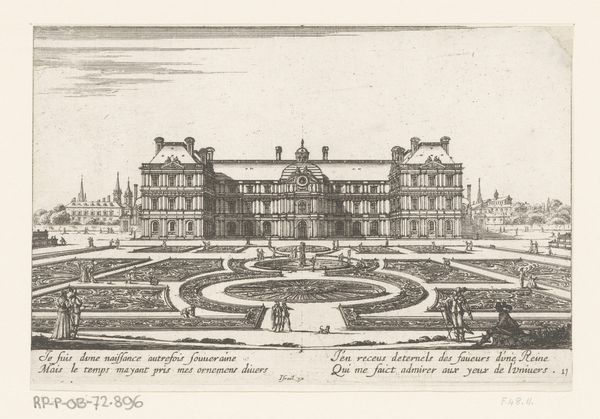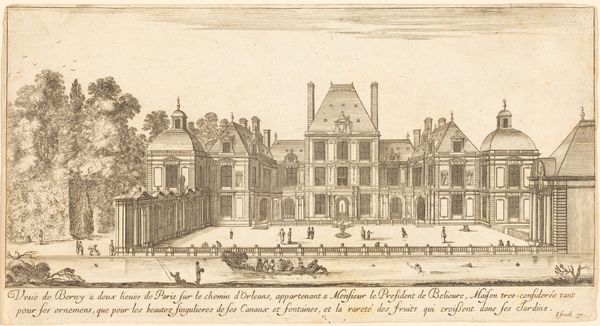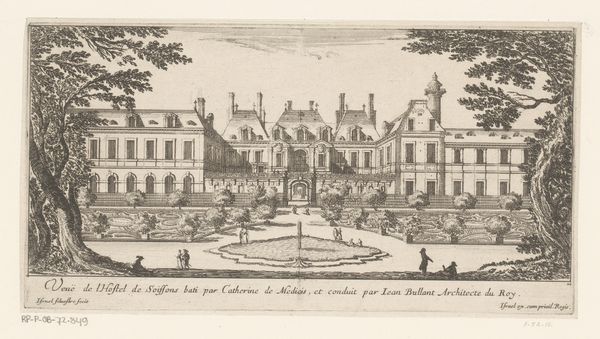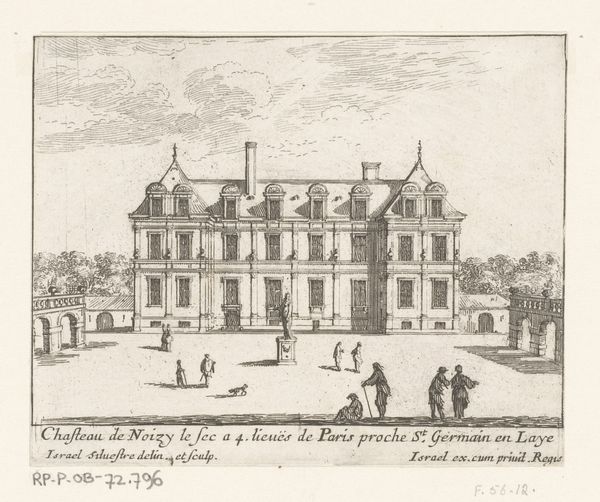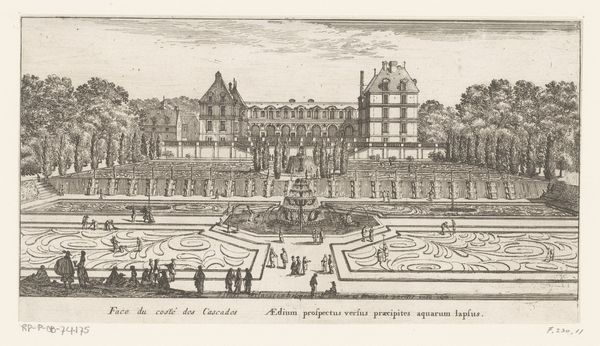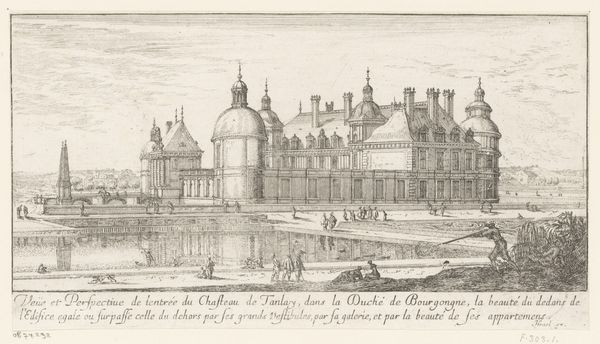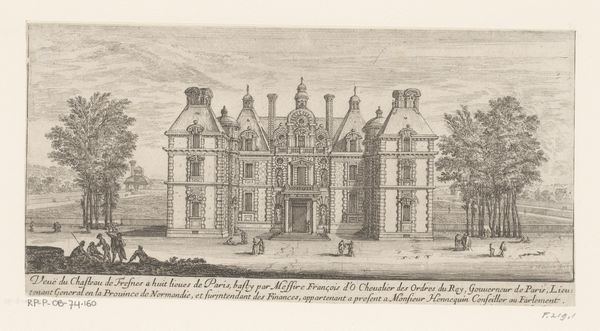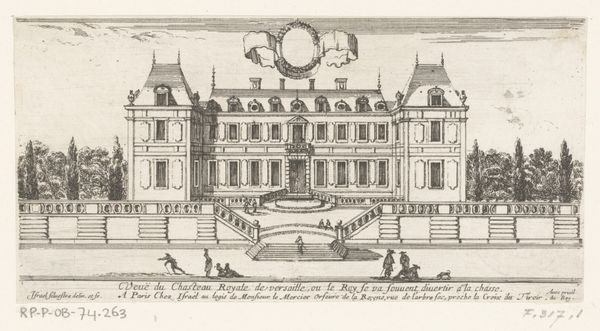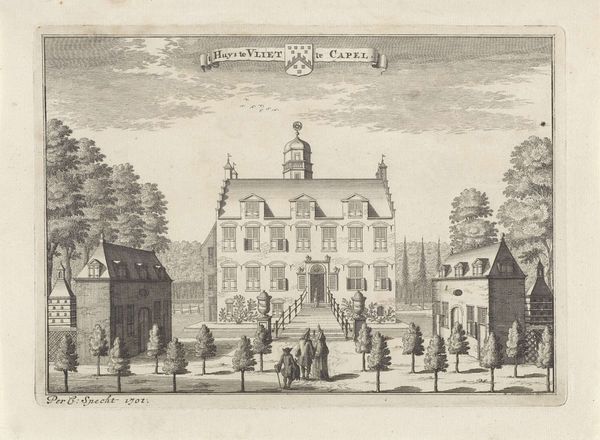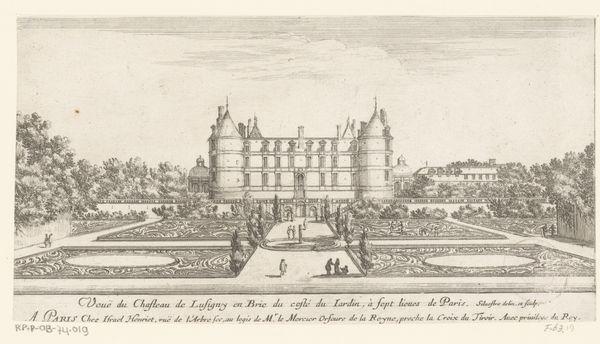
Gezicht op het kasteel van Tanlay te midden van de tuinen 1631 - 1661
0:00
0:00
israelsilvestre
Rijksmuseum
drawing, print, engraving, architecture
#
drawing
#
baroque
# print
#
landscape
#
cityscape
#
engraving
#
architecture
Dimensions: height 125 mm, width 239 mm
Copyright: Rijks Museum: Open Domain
Curator: This is "View of the Château de Tanlay Amidst the Gardens" by Israel Silvestre, created between 1631 and 1661. The print, a meticulous engraving, captures not just a building but a whole world. Editor: My first impression is of formality, but a slightly playful formality. There's a precision in the architecture mirrored in the landscape's layout that hints at absolute power, but also something of a fantasy. Curator: Look at the castle itself, how Silvestre uses line to create texture. The repeated patterns of the windows and ornamentation suggest a certain societal order. Do you think this suggests it as an absolutist symbol? Editor: It resonates on multiple levels. Castles throughout history often symbolized dominance, of course. What Silvestre visualizes is not only aristocratic power, but also the humanist principles spreading across Europe at the time. Note that castle domes often appear to mimic ancient roman imperial symbols. Also consider the inclusion of so many leisurely enjoying the manicured lawns! Curator: Note also the placement of those figures. Their careful distribution draws your eye deeper into the composition. We must think of Silvestre not just as an architect or documentarian, but as a composer creating a specific spatial harmony, Editor: You know, these estates like Tanlay had a crucial role in history. As physical manifestations of wealth and prestige, and considering the era, it stands as a symbol of France’s developing identity. Silvestre shows how humans integrate into nature. We see figures stroll, socialize, even seemingly enjoying leisure activities like hunting and fishing. The chateau isn't isolated, but embedded in everyday experience. Curator: That integration of lived life truly alters the viewing experience. Consider how our eye is drawn through the central path and terminates on the distant central dome, as opposed to being focused immediately on a single singular dominating subject in the middle of the piece. It's truly amazing to see the power dynamics so intrinsically, and yet subtly communicated via geometric patterns. Editor: Seeing how social activities mingle in such controlled open spaces—this really opens my mind to how space was meant to shape behavior and experience back then. What did these designed views signify to its contemporary audience? Curator: Precisely. This print demonstrates more than surface appearances, and hints at broader truths regarding this chateau, but in Silvestre's view, about European society in the era as well.
Comments
No comments
Be the first to comment and join the conversation on the ultimate creative platform.
